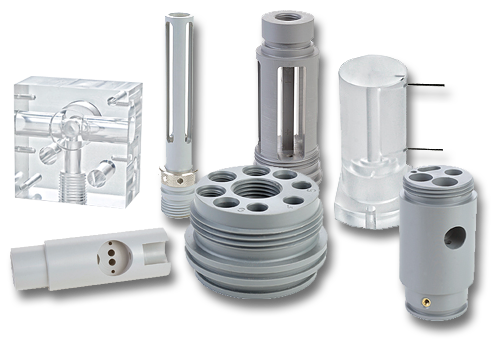Four Ways to Enhance the Supply Chain for Precision Machined Components
 Having a machine shop supplier that consistently delivers precision machined CNC Swiss lathe turned and milled components when required at competitive prices is key to a high-functioning organization. But how does an organization best integrate systematic practices into its processes for an efficient supply chain? Four best practices help deliver consistent, high-quality parts for large-scale projects.
Having a machine shop supplier that consistently delivers precision machined CNC Swiss lathe turned and milled components when required at competitive prices is key to a high-functioning organization. But how does an organization best integrate systematic practices into its processes for an efficient supply chain? Four best practices help deliver consistent, high-quality parts for large-scale projects.
- Integrate inventory management systems
- Mature quality management systems
- Open communication between teams
- Ability to discuss manufacturability for value engineering
Integrate Inventory Management Systems
There are a few methods for integrating an inventory management system. One practice is called Kanban, a pull-based system based on customer demand. Production is driven by the need to fulfill orders than to build inventory. In a Kanban system, the preceding process moves the operations forward based on actual demand. Visual cues with colored bins or cards help this system signal the exact needs. Kanban helps machine shops set up their CNC Swiss and CNC horizontal machining production schedules to align with customer needs. This scheduling reduces the risk of shortages and overproduction. Another practice for IMS is Just-In-Time (JIT) manufacturing. JIT is a philosophy similar to Kanban but uses a push-based system that relies on forecasted demand. Both Kanban and JIT help reduce waste and manage inventory efficiently.
Use Mature Quality Management Systems
Quality management systems ensure manufacturers meet the requirements for a part to exact specifications. What is requested is output at a consistently high quality the first and every time. Quality assurance (QA) starts with engineering and is driven through the machining process. Companies that use processes such as Advanced Product Quality Planning (APQP) will help ensure customer satisfaction with new products or processes and reduce downstream risk and costs. Additionally, solid metrology and quality plan methodology help identify flaws before and during machining to minimize scrap.
Keep Teams Talking
Open communication between customers and supply chain partners helps tease out any potential problems with parts production. There are opportunities for engineers and machinists to have open dialogs to determine the best outcomes of a project. The best teams listen to each other and don’t have preconceived ideas about accomplishing the goal. Over time the teams build trust that the other team members want to work quickly and efficiently to successfully complete the contract.
Manufacturability for Value Engineering
This is a direct result of when teams successfully communicate. Total manufacturing costs decrease since engineers and machinist share experience. Customer engineering teams can take input from CNC machinist experiences to integrate with their designs. Additionally, open communication increases opportunities to strategically gang up similar parts and machining processes to lower the cost per part by reducing the setup costs or other hidden administration costs associated with the purchasing process. This open dialogue creates a clear path to improved delivery, responsiveness, and total cost improvements.
A supply chain is a complex logistics system that consists of facilities that convert raw materials into finished products which are later distributed to end consumers [1] or end customers.[2] Meanwhile, supply chain management deals with the flow of goods within the supply chain in the most efficient manner. – Wikipedia



